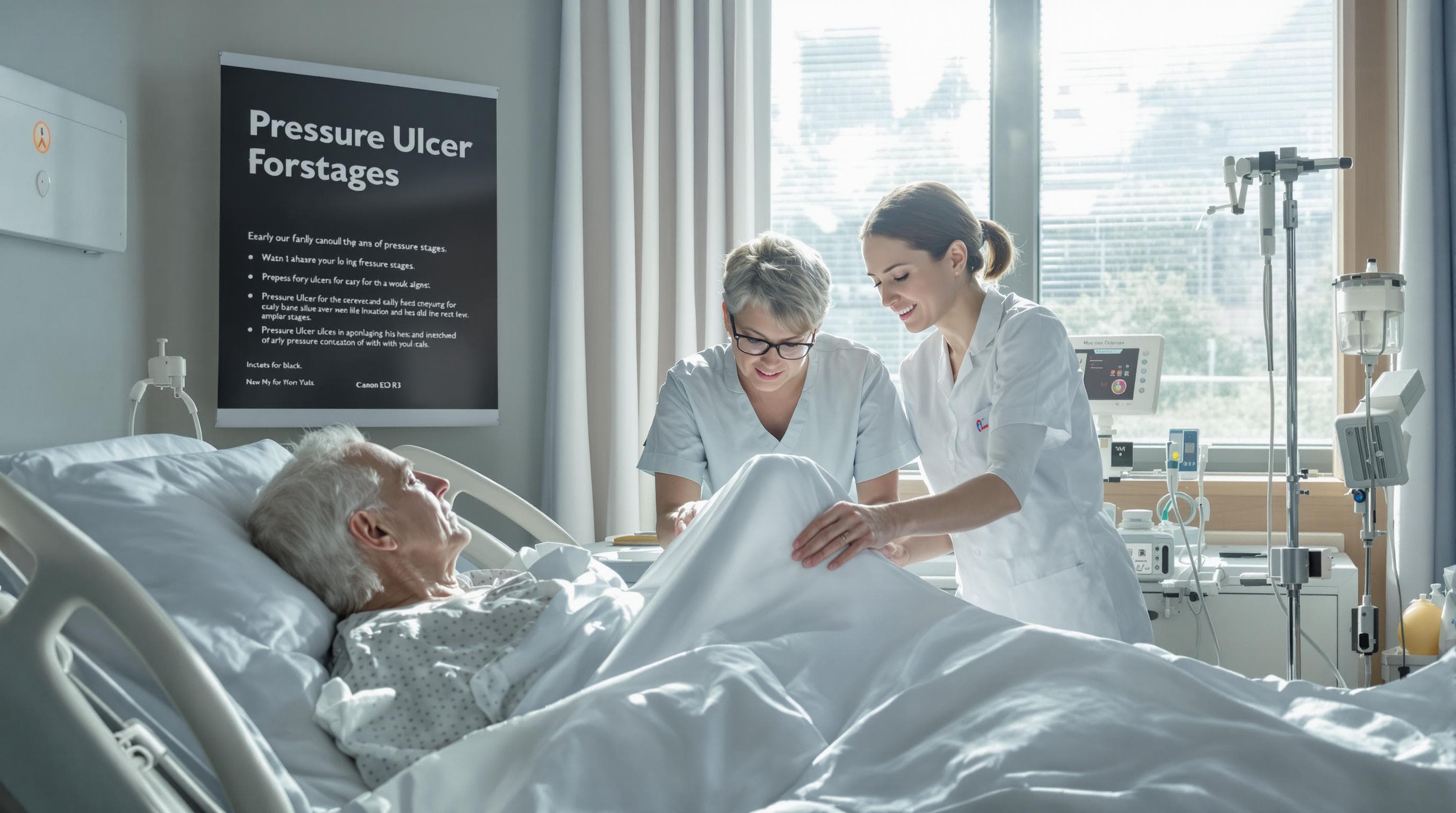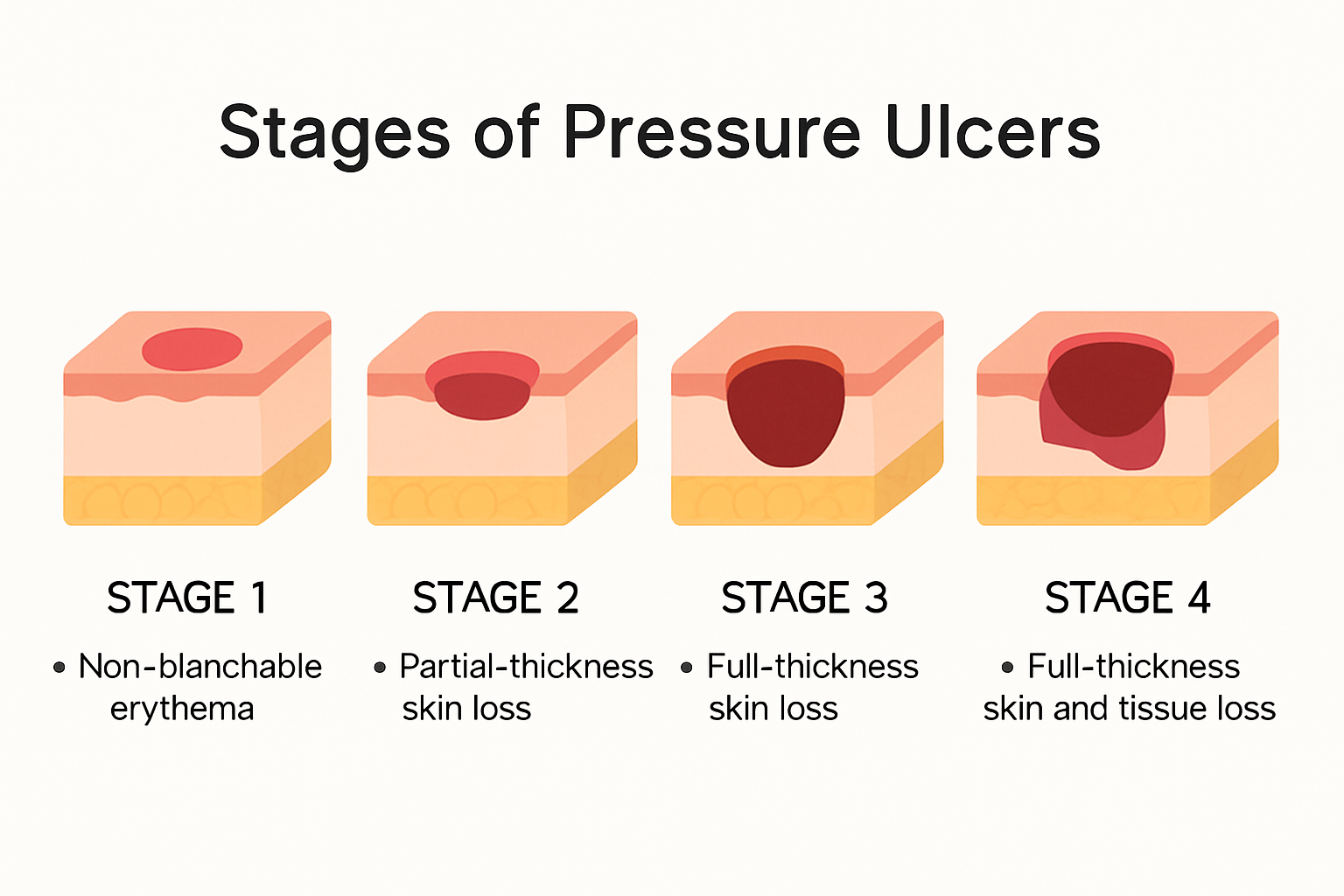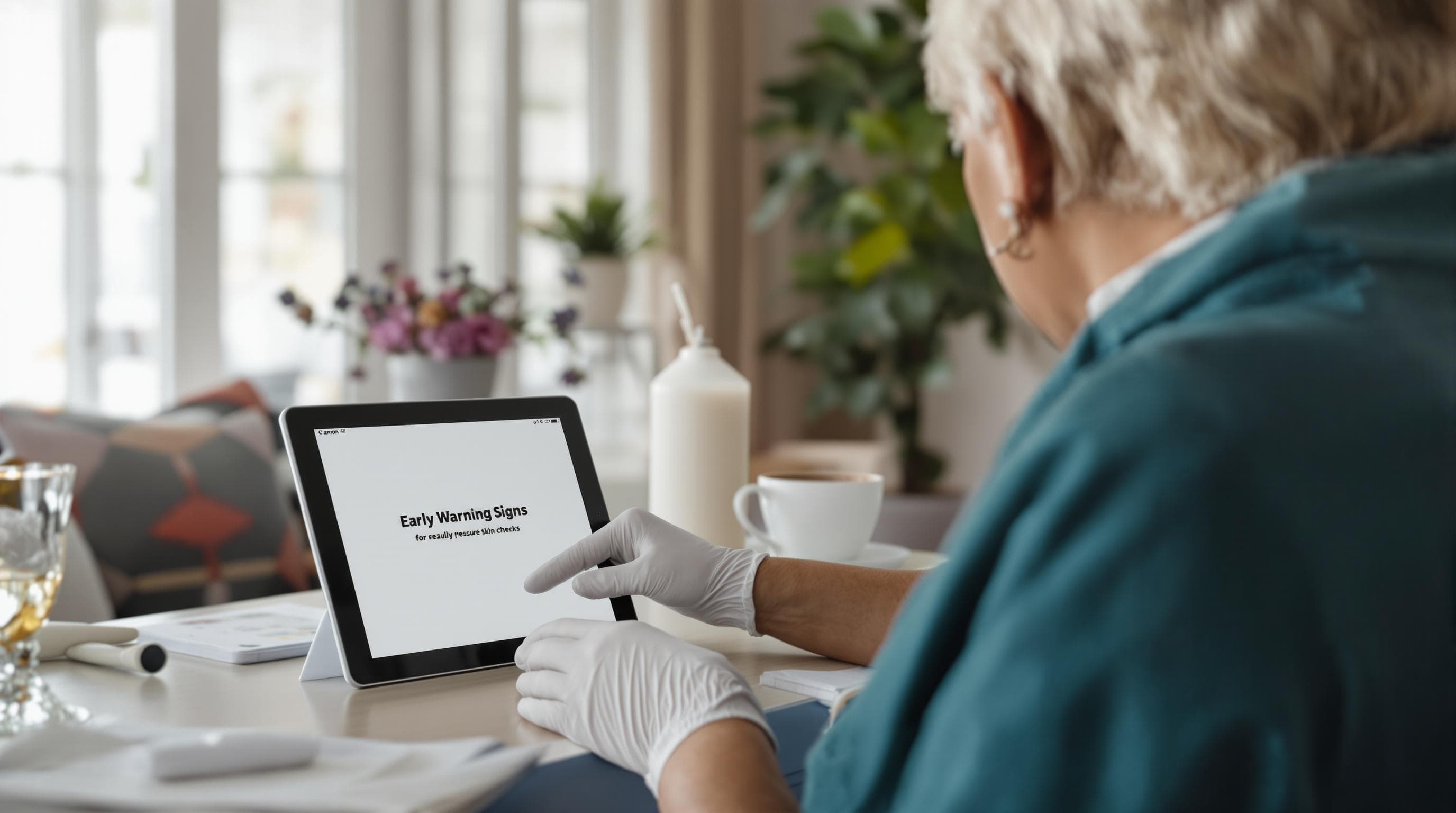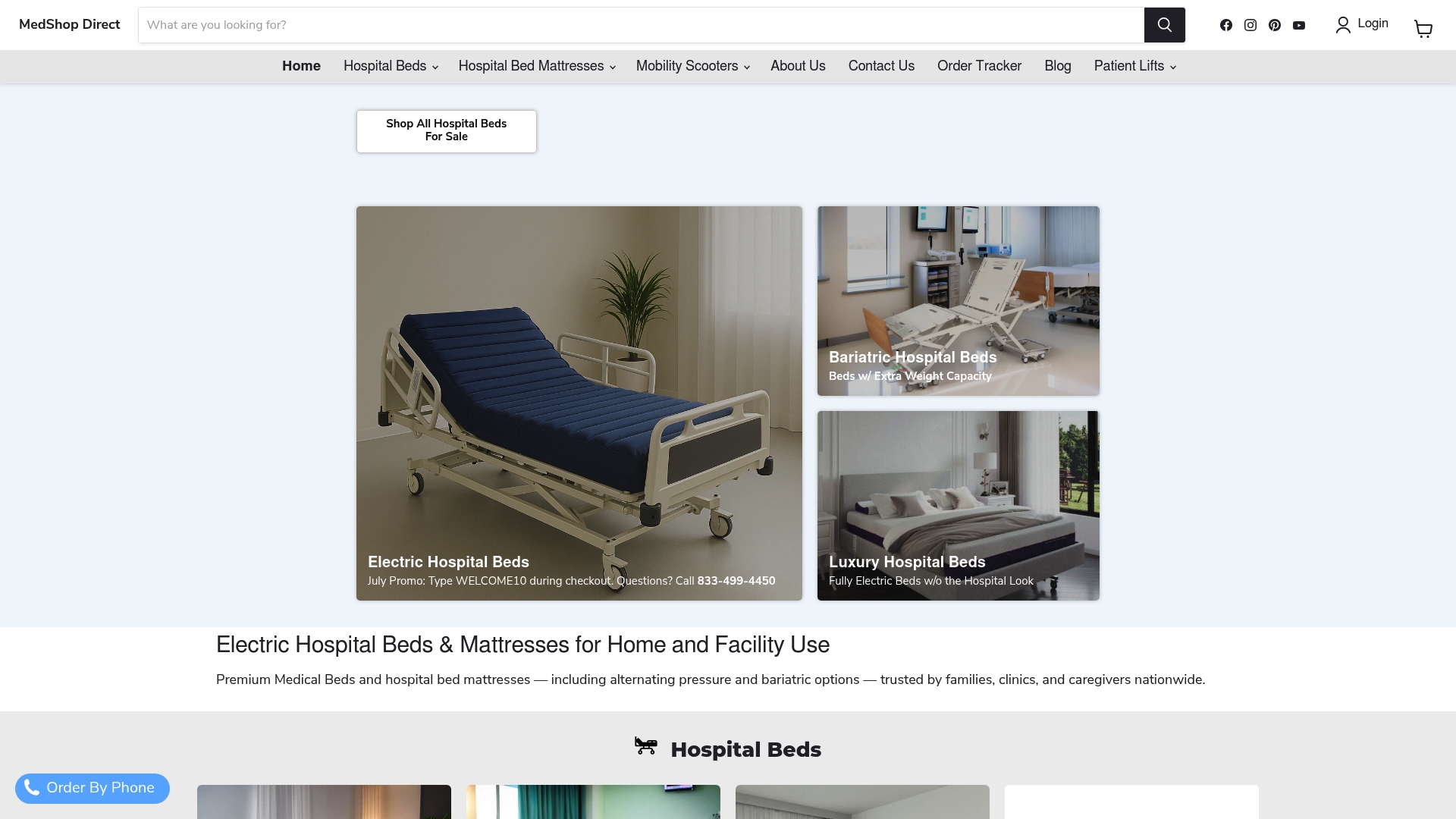

Pressure ulcers might sound like a distant concern, but they impact up to one in ten hospitalized patients every year. Most people think these wounds start with deep cuts or visible injury. In reality, even a small patch of reddened skin can mark the beginning of serious tissue breakdown that can become life-threatening if unchecked.
View our Hospital Bed Mattress Options
| Takeaway | Explanation |
|---|---|
| Recognize the Four Stages of Pressure Ulcers | Understand the four distinct stages to adequately monitor and address skin injuries before they escalate. |
| Identify Vulnerable Populations | Assess individuals with limited mobility, chronic conditions, or age-related factors for increased risk of pressure ulcers. |
| Implement Comprehensive Daily Skin Care | Maintain skin health through regular cleansing, moisture management, and daily inspections to prevent ulcer formation. |
| Utilize Specialized Equipment | Leverage advanced mattresses and positioning devices to alleviate pressure and enhance patient safety during movement. |
| Monitor Nutrition and Hydration | Ensure adequate intake of nutritious foods and fluids to support skin integrity and promote overall healing. |
Pressure ulcers represent a critical healthcare challenge that requires careful understanding and management. The American Academy of Family Physicians provides a comprehensive framework for identifying and classifying these complex skin injuries, which can develop rapidly in patients with limited mobility.
Pressure ulcers do not simply appear overnight but progress through distinct stages, each characterized by increasing severity of tissue damage. Johns Hopkins Medicine explains that these stages represent a continuum of tissue breakdown, starting with minor skin changes and potentially advancing to severe, life-threatening wounds.
The staging system helps healthcare professionals and caregivers understand the precise condition of a wound, enabling targeted treatment strategies. Each stage provides critical information about the depth and extent of tissue damage, which directly influences the approach to wound care and healing.

Understanding the nuanced characteristics of each stage is crucial for early detection and intervention. The NCBI Bookshelf offers a detailed classification that breaks down the progression of pressure ulcers into four distinct stages:
Stage 1: Characterized by intact skin with non-blanchable redness. The affected area appears different in color compared to surrounding tissue and may feel warmer or cooler to the touch.
Stage 2: Involves partial-thickness skin loss, presenting as an open wound with a red-pink wound bed. This stage might look like a fluid-filled blister or a shallow abrasion.
Stage 3: Represents full-thickness tissue loss where subcutaneous fat becomes visible. The wound may show depth and might include tunneling or undermining of surrounding tissue.
Stage 4: The most severe stage, involving extensive destruction extending to muscle, bone, or supporting structures. These wounds are extremely serious and require immediate, specialized medical intervention.
Recognizing these stages empowers patients, caregivers, and healthcare providers to implement timely and appropriate wound management strategies. Early identification can significantly improve healing outcomes and prevent further complications.
While the staging system provides a clear framework, it is essential to understand that individual wounds can vary. Factors such as patient health, underlying conditions, and wound care practices play crucial roles in the healing process. Professional medical assessment remains the gold standard for accurate wound staging and treatment planning.
To help readers compare and understand each pressure ulcer stage, the following table summarizes their key characteristics:
| Stage | Skin Condition | Visible Signs | Severity |
|---|---|---|---|
| Stage 1 | Intact skin, non-blanchable redness | Red/discolored area, warmer or cooler touch | Mild |
| Stage 2 | Partial-thickness skin loss | Open wound, red-pink bed, blister or abrasion | Moderate |
| Stage 3 | Full-thickness tissue loss | Visible fat, depth, possible tunneling | Serious |
| Stage 4 | Extensive destruction (muscle, bone exposed) | Deep wound, muscle/bone/supporting structures | Severe |

Pressure ulcers can develop quickly and without warning, making early detection crucial for patient health. National Pressure Injury Advisory Panel research highlights that understanding the warning signs and identifying high-risk individuals are fundamental strategies in preventing these potentially serious wounds.
Certain patient groups are significantly more susceptible to developing pressure ulcers. Centers for Disease Control and Prevention identifies key risk factors that dramatically increase an individual’s likelihood of experiencing these injuries:
Immobility: Patients with limited movement or those confined to beds or wheelchairs face the highest risk.
Age: Older adults have thinner skin and reduced circulation, making them more vulnerable to tissue damage.
Chronic Medical Conditions: Individuals with diabetes, cardiovascular diseases, and neurological disorders are at increased risk.
Recognizing the initial indicators of pressure ulcer development can prevent progression to more severe stages. American Journal of Nursing outlines several key warning signs that caregivers and healthcare professionals should monitor:
Skin Discoloration: Any persistent redness or color changes in skin, particularly over bony areas like heels, hips, and tailbone.
Skin Temperature Changes: Areas that feel unusually warm or cool compared to surrounding tissue.
Texture Modifications: Skin that appears harder, softer, or more swollen than normal.
Healthcare professionals utilize systematic approaches to evaluate pressure ulcer risk. World Health Organization recommends comprehensive risk assessment tools that consider multiple factors:
By understanding these warning signs and risk factors, patients and caregivers can take proactive steps to prevent pressure ulcer development. Regular skin inspections, maintaining proper nutrition, ensuring frequent repositioning, and using specialized support surfaces are critical preventative measures.
Professional medical guidance remains essential. While these strategies provide valuable insights, individual patient circumstances vary. Consulting healthcare providers for personalized risk assessments and prevention strategies is always recommended.
The following table provides an at-a-glance checklist of common risk factors and early warning signs of pressure ulcers to help with early detection and prevention:
| Factor/Sign | Present (Yes/No) |
|---|---|
| Limited mobility | |
| Advanced age | |
| Chronic medical conditions | |
| Skin discoloration | |
| Temperature changes in skin | |
| Texture modifications in skin | |
| Infrequent repositioning |
Pressure ulcer prevention and management require specialized medical equipment designed to reduce tissue stress and promote patient comfort. Cochrane Reviews highlight the critical role of advanced support surfaces in mitigating pressure injury risks for patients with limited mobility.
Modern medical mattresses represent a sophisticated approach to pressure ulcer prevention. Cochrane Review research demonstrates that specialized support surfaces can significantly reduce the development and progression of pressure injuries.
Key mattress technologies include:
Alternating Pressure Mattresses: Utilize air chambers that sequentially inflate and deflate, redistributing body weight and reducing continuous pressure on specific areas.
Memory Foam Surfaces: Designed to conform to body contours, evenly distributing weight and minimizing pressure point concentrations.
Gel-Infused Mattress Overlays: Provide additional cushioning and temperature regulation to enhance patient comfort and skin protection.
Preventing pressure ulcers involves more than passive support surfaces. Patient lifts and transfer devices play a crucial role in reducing friction and shear forces during movement. Research protocols emphasize the importance of strategic patient positioning and gentle movement techniques.
Effective transfer solutions include:
Mechanical Patient Lifts: Enable safe, controlled patient repositioning without dragging or excessive skin friction.
Sliding Sheets: Allow smooth patient movement with minimal skin stress.
Adjustable Hospital Beds: Provide multiple positioning options to redistribute pressure and enhance patient comfort.
Successful pressure ulcer management requires a holistic strategy combining advanced equipment, proper technique, and consistent monitoring. Medical professionals recommend:
While technological solutions are powerful, they complement rather than replace comprehensive patient care. Healthcare providers must continue to assess individual patient requirements, monitor skin condition, and adjust interventions accordingly.
Patients and caregivers should work closely with healthcare professionals to select appropriate medical equipment, ensuring optimal pressure ulcer prevention and management strategies.
Pressure ulcer prevention demands active participation from both patients and caregivers. National Pressure Injury Advisory Panel emphasizes that proactive strategies can significantly reduce the risk of developing these potentially serious wounds.
Consistent skin assessment and maintenance are fundamental to preventing pressure ulcers. Centers for Disease Control and Prevention recommends comprehensive daily skin care routines:
Gentle Cleansing: Use mild, pH-balanced cleansers that do not strip natural skin oils.
Moisture Management: Keep skin clean and dry, avoiding excessive moisture that can break down skin integrity.
Regular Inspections: Perform daily skin checks, paying special attention to bony areas and regions with potential pressure points.
Frequent repositioning is crucial in preventing pressure ulcer development. American Journal of Nursing provides critical guidance for patients and caregivers:
Repositioning Frequency: Shift body position every 2 hours for bedridden patients.
Proper Techniques: Use lifting rather than dragging techniques to minimize skin friction.
Assistive Devices: Utilize pillows, wedges, and specialized positioning aids to redistribute pressure.
World Health Organization highlights the critical role of overall health in pressure ulcer prevention:
Balanced Nutrition: Consume protein-rich foods that support skin healing and tissue maintenance.
Hydration: Maintain adequate fluid intake to support skin elasticity and overall health.
Supplement Considerations: Discuss potential vitamin and mineral supplements with healthcare providers.
Successful pressure ulcer prevention requires a comprehensive approach. While these strategies provide valuable guidance, individual needs vary. Patients with complex medical conditions should always consult healthcare professionals for personalized prevention plans.
Education is a powerful tool. Patients and caregivers who understand pressure ulcer risks and prevention techniques can significantly improve health outcomes. Regular communication with healthcare providers, staying informed about best practices, and maintaining a proactive approach are key to effective pressure ulcer prevention.
Pressure ulcers progress through four stages: Stage 1 (intact skin with non-blanchable redness), Stage 2 (partial-thickness skin loss), Stage 3 (full-thickness tissue loss), and Stage 4 (extensive destruction involving muscle or bone).
Early signs include persistent skin discoloration, temperature changes in the affected area, and texture modifications such as hardness or swelling. Regular skin checks are crucial for early detection.
Individuals with limited mobility, older adults, and those with chronic conditions such as diabetes or neurological disorders are at higher risk for developing pressure ulcers.
Preventive measures include regular skin care, frequent repositioning, using specialized mattresses, ensuring proper nutrition and hydration, and being vigilant about early warning signs.
Worried about the rapid progression of pressure ulcers? You are not alone. As highlighted in the article, failing to address early skin changes or insufficient support can quickly lead to severe wounds and long-term discomfort. Many patients and caregivers struggle to find safe, effective ways to prevent and manage these injuries. Specialized equipment is often needed to provide reliable protection and peace of mind.

Experience the difference that trusted solutions can make. At MedShop Direct, you will discover hospital beds, alternating pressure mattresses, and patient lifts designed to relieve pressure and support healing. Take the first step to protect yourself or your loved one. Explore our full selection of comfort-driven medical products now by visiting MedShop Direct’s homepage. Your peace of mind and patient safety are just a click away.
placeholder